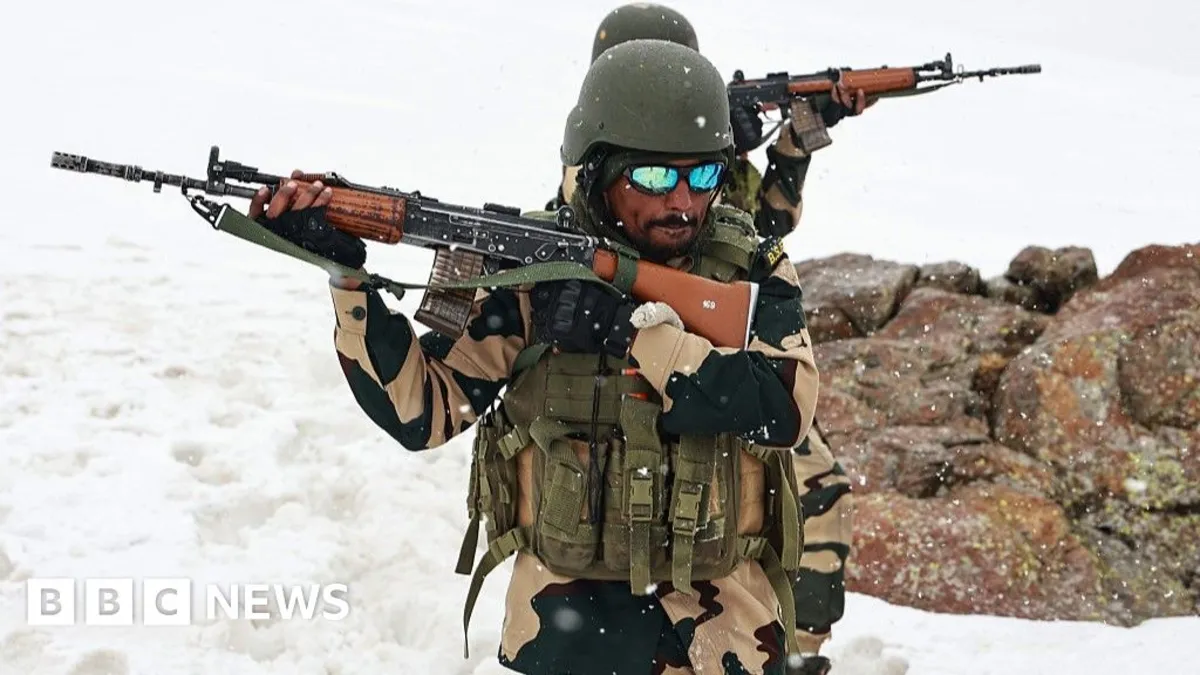
In a significant and dramatic overnight operation, India has confirmed that it launched missile and air strikes targeting nine sites across Pakistan and Pakistan-administered Kashmir. The strikes, which occurred between 01:05 and 01:30 India time (19:35 to 20:00 GMT on Tuesday), were aimed at what India described as militant positions based on credible intelligence. This military action sent shockwaves throughout the region, with residents startled awake by the sound of thunderous explosions.
Pakistan has responded by stating that only six locations were impacted and claimed to have shot down five Indian fighter jets and a drone, a claim that India has not verified. Pakistan also reported that 26 individuals were killed and 46 injured due to the air strikes and shelling along the Line of Control (LoC)—the de facto border separating India and Pakistan. On the other hand, India's army reported that 10 civilians lost their lives due to Pakistani shelling on its side of the LoC. This escalation in hostilities follows a deadly militant attack on tourists in Pahalgam, Indian-administered Kashmir, raising tensions between the two nuclear-armed nations to alarming levels.
Experts are questioning whether this recent attack signifies a new phase of escalation. Previous incidents, such as the surgical strikes following the 2016 Uri attack and the 2019 airstrikes after the Pulwama bombing, have set a precedent for military responses. The latest retaliation stands out due to its broader scope, targeting the infrastructure of three significant Pakistan-based militant groups simultaneously. India claims to have struck nine militant targets, including key hubs of Lashkar-e-Taiba (LeT), Jaish-e-Mohammed, and Hizbul Mujahideen.
Among the targeted locations were two camps in Sialkot, situated just 6-18 km from the border, and a Jaish-e-Mohammed headquarters in Bahawalpur, located 100 km inside Pakistan. Additionally, a LeT camp in Muzaffarabad, 30 km from the LoC, was reportedly involved in recent attacks against Indian-administered Kashmir. While Pakistan insists that no terror camps were hit, the expansive nature of India's targets indicates a shift from past military operations.
Historically, Indian military strikes have focused on Pakistan-administered Kashmir across the LoC. However, this recent operation involved strikes within Pakistan's Punjab province, explicitly targeting terrorist infrastructure and headquarters linked to major terror groups. Ajay Bisaria, a former Indian high commissioner to Pakistan, characterized this response as a "Balakot plus" strategy intended to establish deterrence while delivering a strong message. These more precise and visible strikes are designed to be less deniable by Pakistan, signaling a shift in the operational approach of the Indian military.
Indian sources assert that these strikes aim to re-establish the deterrence that was perceived to have diminished since 2019. This approach mirrors Israel's doctrine of requiring periodic strikes to maintain deterrence. However, experts caution that a solely retaliatory stance could provoke Pakistan into escalating the conflict further, with potential risks of a broader confrontation.
Most experts believe that a retaliatory action from Pakistan is inevitable, and the focus will likely shift to managing the next phase of escalation through diplomatic channels. Pakistan's military rhetoric, combined with its stated resolve to respond to Indian strikes, indicates that we may see retaliatory surgical strikes in the coming days. However, there are concerns that such actions could lead to a limited conventional conflict between the two nations.
Christopher Clary, a scholar at the University at Albany in the US, suggests that given the magnitude of India's strikes and reported damage, Pakistan's response may be proportionate, potentially targeting Indian military assets. Despite rising tensions, some analysts remain hopeful that both nations may only engage in reciprocal standoff strikes, avoiding a full-blown crisis.
While the atmosphere leading up to India's strikes lacked overt war hysteria, experts warn that public sentiment in Pakistan could shift rapidly. The political landscape is fractured, exacerbated by the imprisonment of popular leader Imran Khan, which has led to diminished public support for the military. However, if anti-India sentiment rises, especially in Punjab, civilian pressure on the military to act could increase.
Dr. Ejaz Hussain, a Lahore-based analyst, believes that the current standoff offers an opportunity for the military to regain public favor amid rising tensions. The military's defensive posture is being amplified through media channels, reinforcing nationalistic sentiments. As both nations navigate this precarious situation, the potential for escalation remains high, marking this as one of the most dangerous crises between India and Pakistan in recent years.
India is currently treading a delicate path between escalation and restraint. Following the attack in Pahalgam, India quickly implemented several retaliatory measures, including closing border crossings and suspending water-sharing treaties. Both nations have engaged in exchanges of small-arms fire, and India has barred Pakistani aircraft from its airspace, echoing previous actions taken after the 2019 Pulwama attack.
As tensions escalate, the need for diplomatic engagement becomes paramount. Historical precedents suggest that effective diplomacy can lead to de-escalation, as seen in the aftermath of previous crises. India's willingness to pursue diplomatic channels could provide an opportunity for both nations to step back from the brink and avoid further conflict.